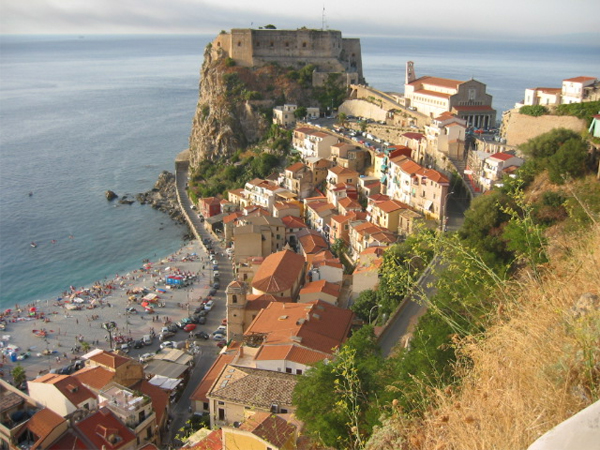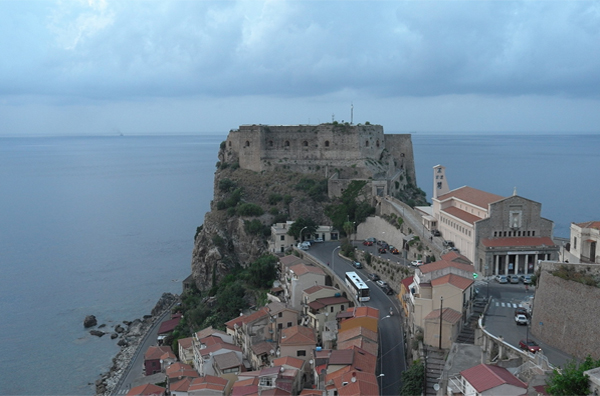

MAGNA GRAECIA AND ROMAN TIMES
The earliest fortification on the rock of Scylla dates back to the beginning of the 5th century B.C. when, during Anaxila’s reign, the city of Reggio rose to such importance that it was able to obstruct the rise of rivalling powers for more than two centuries. In fact, in 493 B.C., Anaxila the Younger ruler of Reggio, with the deployment of a considerable army, defeated the Etruscan pirates – who held in Scylla a secure foothold there for their raids – and began the works for the construction of a high fortress to put an end to their incursions. This became an important outpost for Anaxilaus to control sea routes.
The fortification work on the high rock was completed by the subsequent tyrants of Reggio, who were often engaged in clashes with pirates. The fortified harbour, built on purpose in the surrounding area, towards Punta Pacì, well served its function as inaccessible stronghold on the opposite side of the rock. A bastion of security for the people of Reggio, equipped with a landing place, the Scylla fortification was of fundamental importance to the success of the war against piracy, enabling the tyrants of Reggio to put up a valid resistance against the attacks of new enemies for a long time, even amidst the defeated Tyrrhenian pirates’ continued attempts at revenge.
The Reggio dominion over the area was interrupted for only fifty years by Dionysius, tyrant of Syracuse, who subdued the fortress in 390 B.C. after a long siege. In the fifty years between the destruction wrought by Dionysius and the regaining of independence favoured by Timoleon of Corinth, who overthrew the tyrannical power of Syracuse (340 B.C.), the Tyrrhenians reoccupied the fortress.
Once back to normal, Scylla returned into the orbit of Reggio. The cliff slowly became a true fortress, so much so that in the 3rd century B.C., the fortifications of the Regginians, allied with the Romans, successfully resisted the Punic and their Bruzi allies’ attacks.
Later, emperor Octavian, once he had disposed of his rival Pompeus, having realised the strategic importance of the cliff of Scylla, which had offered him suitable refuge, decreed that it should be further fortified. In fact, Pliny the Elder mentions Scylla as Oppidum Scyllaeum (Naturalis historia, III, 76), where oppidum in Latin is a term used to indicate a large fortified settlement.
The Greek geographer Strabo writes about the Skyllaion (in Greek Σκυλλαίον, the original Greek name for the place): ‘After the Metaurus river there is another Metaurus; then follows the Skyllaion promontory, in an elevated position, forming a peninsula with a small isthmus that can be landed on either side. Anasilaus, tyrant of Rhegion, fortified it against the Tyrrhenians, making it a naval station; he thus prevented the pirates from crossing the Strait: in fact, close by is the promontory of Caenys … which is Italy’s last extremity to form the Strait […]”



